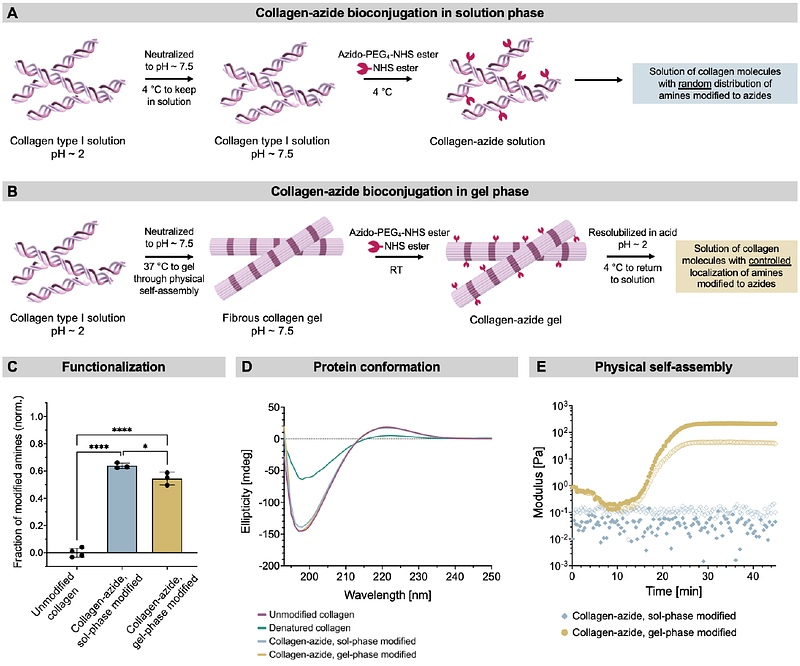Reinforcement of Fibrillar Collagen Hydrogels with Bioorthogonal Covalent Crosslinks

Reinforcement of Fibrillar Collagen Hydrogels with Bioorthogonal Covalent Crosslinks
Brunel, L. G.; Long, C. M.; Christakopoulos, F.; Cai, B.; de Paiva Narciso, N.; Johansson, P. K.; Singhal, D.; Enejder, A.; Myung, D.; Heilshorn, S. C.
AbstractBioorthogonal covalent crosslinking stabilizes collagen type I hydrogels, improving their structural integrity for tissue engineering applications with encapsulated living cells. The chemical modification required for crosslinking, however, interferes with the fibrillar nature of the collagen, leading instead to an amorphous network without fibers. We demonstrate an approach to perform bioconjugation chemistry on collagen with controlled localization such that the modified collagen retains its ability to self-assemble into a fibrillar network, while also displaying functional groups for covalent crosslinking with bioorthogonal click chemistry. The collagen matrix is formed through a sequential crosslinking process, in which the modified collagen first physically assembles into fibers and then is covalently crosslinked. This approach preserves the fibrous architecture of the collagen, guiding the behavior of encapsulated human corneal mesenchymal stromal cells, while also reinforcing fibers through covalent crosslinks, strengthening the stability of the cell-laden collagen hydrogel against cell-induced contraction and enzymatic degradation.